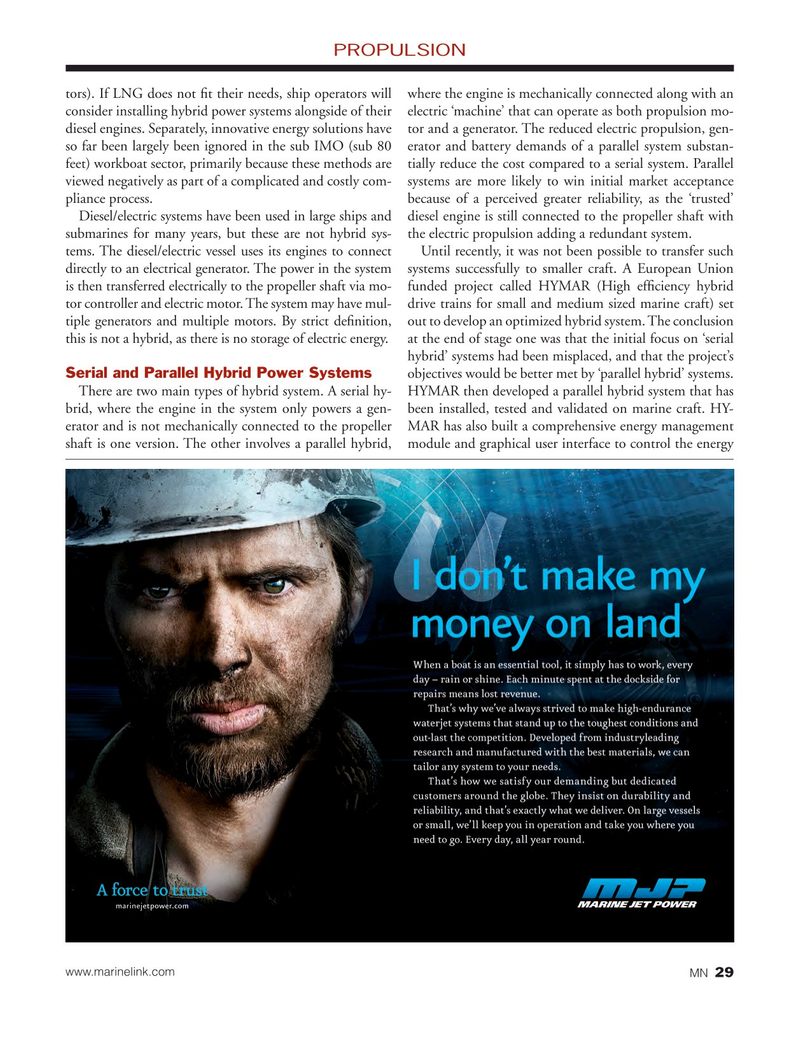
Page 29: of Marine News Magazine (May 2015)
Offshore Annual
Read this page in Pdf, Flash or Html5 edition of May 2015 Marine News Magazine
PROPULSION tors). If LNG does not ? t their needs, ship operators will where the engine is mechanically connected along with an consider installing hybrid power systems alongside of their electric ‘machine’ that can operate as both propulsion mo- diesel engines. Separately, innovative energy solutions have tor and a generator. The reduced electric propulsion, gen- so far been largely been ignored in the sub IMO (sub 80 erator and battery demands of a parallel system substan- feet) workboat sector, primarily because these methods are tially reduce the cost compared to a serial system. Parallel viewed negatively as part of a complicated and costly com- systems are more likely to win initial market acceptance pliance process. because of a perceived greater reliability, as the ‘trusted’
Diesel/electric systems have been used in large ships and diesel engine is still connected to the propeller shaft with submarines for many years, but these are not hybrid sys- the electric propulsion adding a redundant system.
tems. The diesel/electric vessel uses its engines to connect Until recently, it was not been possible to transfer such directly to an electrical generator. The power in the system systems successfully to smaller craft. A European Union is then transferred electrically to the propeller shaft via mo- funded project called HYMAR (High ef? ciency hybrid tor controller and electric motor. The system may have mul- drive trains for small and medium sized marine craft) set tiple generators and multiple motors. By strict de? nition, out to develop an optimized hybrid system. The conclusion this is not a hybrid, as there is no storage of electric energy. at the end of stage one was that the initial focus on ‘serial hybrid’ systems had been misplaced, and that the project’s
Serial and Parallel Hybrid Power Systems objectives would be better met by ‘parallel hybrid’ systems.
There are two main types of hybrid system. A serial hy- HYMAR then developed a parallel hybrid system that has brid, where the engine in the system only powers a gen- been installed, tested and validated on marine craft. HY- erator and is not mechanically connected to the propeller MAR has also built a comprehensive energy management shaft is one version. The other involves a parallel hybrid, module and graphical user interface to control the energy www.marinelink.com
MN 29

 28
28

 30
30
